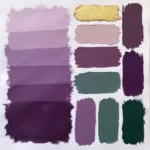Axolotls, the endearing “Mexican walking fish” with their permanent smiles and feathery gills, have become increasingly popular pets. One of their most fascinating characteristics is their diverse range of colors and patterns. But just how many axolotl colors are there? Let’s dive into the captivating world of axolotl pigmentation and discover the answer.
Unraveling the Spectrum: Axolotl Color Basics
While it’s tempting to put an exact number on axolotl colors, the truth is more nuanced. Axolotls come in a spectrum of colors influenced by a combination of genetic factors. These genetic traits control the presence and distribution of pigment cells called chromatophores.
There are four basic types of chromatophores in axolotls:
- Melanophores: Produce black and brown pigments (melanin)
- Iridophores: Contain reflective platelets that create iridescent hues
- Xanthophores: Produce yellow and orange pigments
- Erythrophores: Produce red pigments
The interplay of these chromatophores gives rise to the captivating array of colors we see in axolotls.
 Axolotl Color Genetics
Axolotl Color Genetics
Exploring Common Axolotl Colors
Although individual axolotls can display unique variations, several recognized color types emerge from the interplay of chromatophores. Let’s explore some of the most popular:
1. Wild Type: The natural coloration of axolotls in the wild. Wild types typically have dark brown or olive-green bodies with gold flecks and darker speckling.
2. Leucistic: Leucistic axolotls lack most pigment cells but retain sparkling iridophores, giving them a pale pink or white body with shimmering, almost metallic gills.
 Leucistic Axolotl
Leucistic Axolotl
3. Albino: Unlike leucistics, albino axolotls lack all pigment cells, resulting in a completely white or pale pink body and bright red eyes. They come in different variations like “golden albino” and “white albino,” with subtle differences in their shade.
4. Melanoid: Melanoid axolotls have an overabundance of melanophores, making them appear almost completely black. They lack the gold flecks and lighter speckling often seen in wild types.
5. Axanthic: Axanthic axolotls lack xanthophores and therefore lack yellow and orange pigments. They often display a grayish-blue or lavender coloration.
These are just a few examples, and many other variations and combinations exist, including piebald, mosaic, and chimera axolotls, each showcasing unique and captivating patterns.
A Spectrum, Not a Number
So, how many axolotl colors are there? While categorizing them into distinct groups is helpful, it’s essential to remember that axolotl coloration exists on a spectrum. New and unique combinations of colors and patterns are constantly emerging through selective breeding.
 Different Axolotl Color Morphs
Different Axolotl Color Morphs
The beauty of axolotls lies in their incredible diversity and the potential for an almost limitless array of colors and patterns. Each axolotl’s unique appearance is a testament to the captivating power of genetics and the wonder of the natural world.

